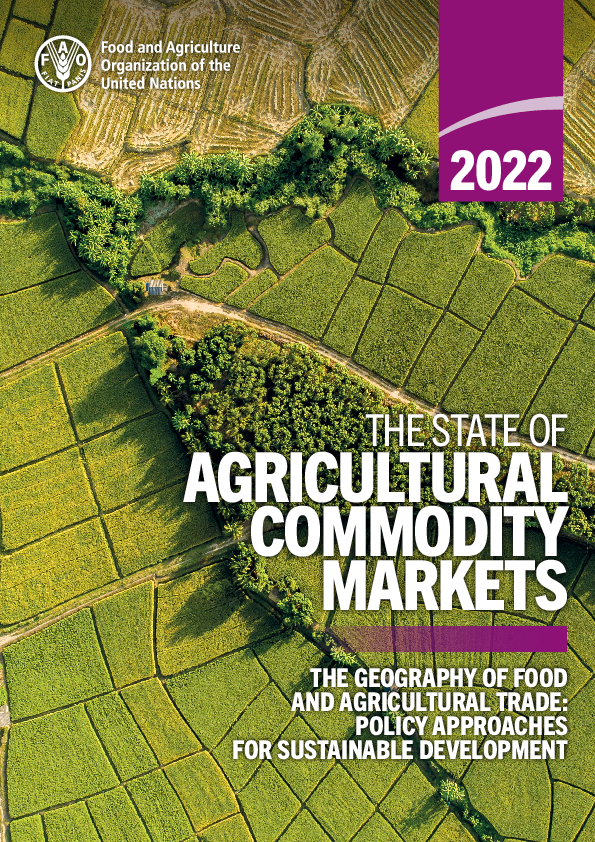- Share this article
- Subscribe to our newsletter
The State of Agricultural Commodity Markets 2022
The State of Agricultural Commodity Markets 2022 (SOCO 2022) report, published by the Food and Agriculture Organization of the United Nations (FAO) in June 2022, examines how we can meet the sustainable development challenges of today and of the future through mutually reinforcing multilateral and regional actions. In so doing it pays attention to global agrifood markets, agrifood system resilience, economic growth and environmental outcomes while recognising that trade policies cannot be expected to address all the entailed trade-offs and the required complementary measures.
In drawing up the SOCO report, FAO conducted modelling exercises to identify the interactions between bilateral trade flows, relative prices and geographic barriers, and to pinpoint the key drivers and inhibitors of trade, such as comparative advantages and trade costs.
Slow progress in multilateral trade negotiations
The globalisation of agrifood markets has raised concerns about the impacts of trade on the environment and on societies.
The trade policy environment is currently characterised by slow progress in multilateral trade negotiations under the World Trade Organization (WTO) and a proliferation of deeper regional trade agreements. In addition to facilitating access to markets, these agreements also aim to promote convergence in domestic policies and regulations among their signatories.
Today, more countries trade with each other and the global agrifood market is more balanced than in 1995. Nevertheless, the trade landscape mapped out in SOCO 2022 shows that although global wealth has grown, the share accounted for by low-income countries has not changed significantly and that agricultural productivity gaps between countries can be enormous.
While the pace of globalisation has slowed since 2008, agrifood trade across regions has become more integrated. In many cases this is the result of trade agreements, geographic proximity and other regional advantages. However, until recently, sub-Saharan Africa has generally not been part of this trend.
One reason is that higher trade costs (e.g. tariffs, insurance, export and import procedures, time delays at borders, compliance with numerous non-tariff measures and standards) can hinder integration and affect the structural transformation of economies. In low-income countries, trade costs can add up to 400 per cent to a product’s final price, much more than for items traded between high-income countries.
In this context, the African Continental Free Trade Area (AfCFTA) will be important for economic growth and development in the region. However, complementary policies must be established in order to let comparative advantages play out without marginalising smallholder farmers, who find it difficult to increase efficiency and compete in more open markets.
Diversifying trade partners
Another takeaway from the report is the value – in terms of reducing vulnerability to potential shocks – of diversifying trade partners, especially for countries that are highly dependent on food imports.
Globally, although agrifood trade can enhance the efficiency of land and water use, it can also have negative environmental impacts. However, environmental provisions can be integrated into multilateral trade rules and the growing number of regional trade agreements. If these are legally binding, they can help tackle the environmental impacts of trade.
Overall, the report still maintains that global environmental externalities, such as greenhouse gas emissions and climate change, can be addressed most effectively through multilateral approaches, with trade rules helping to expand the reach of policies that take the full costs of such impacts into account.
(FAO/ile)
Read more and download the report from the FAO website





Add a comment
Be the First to Comment